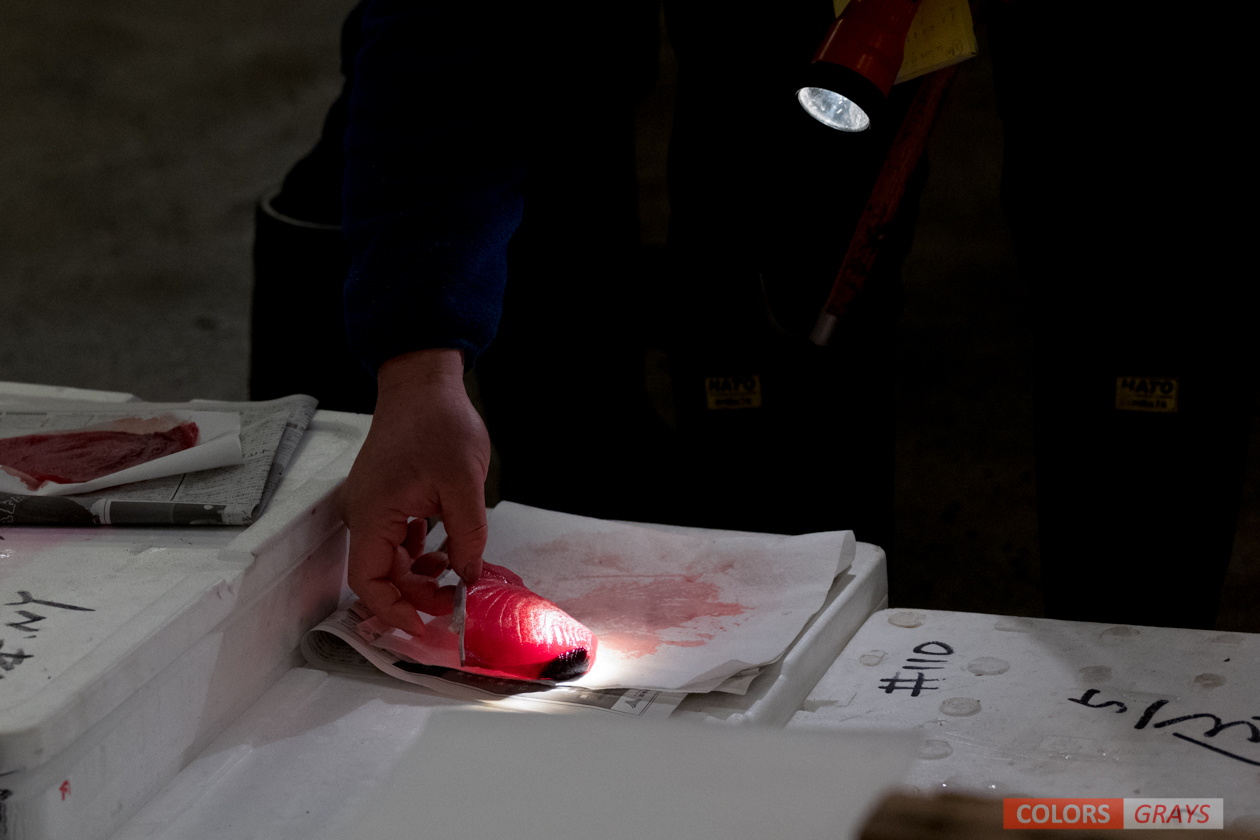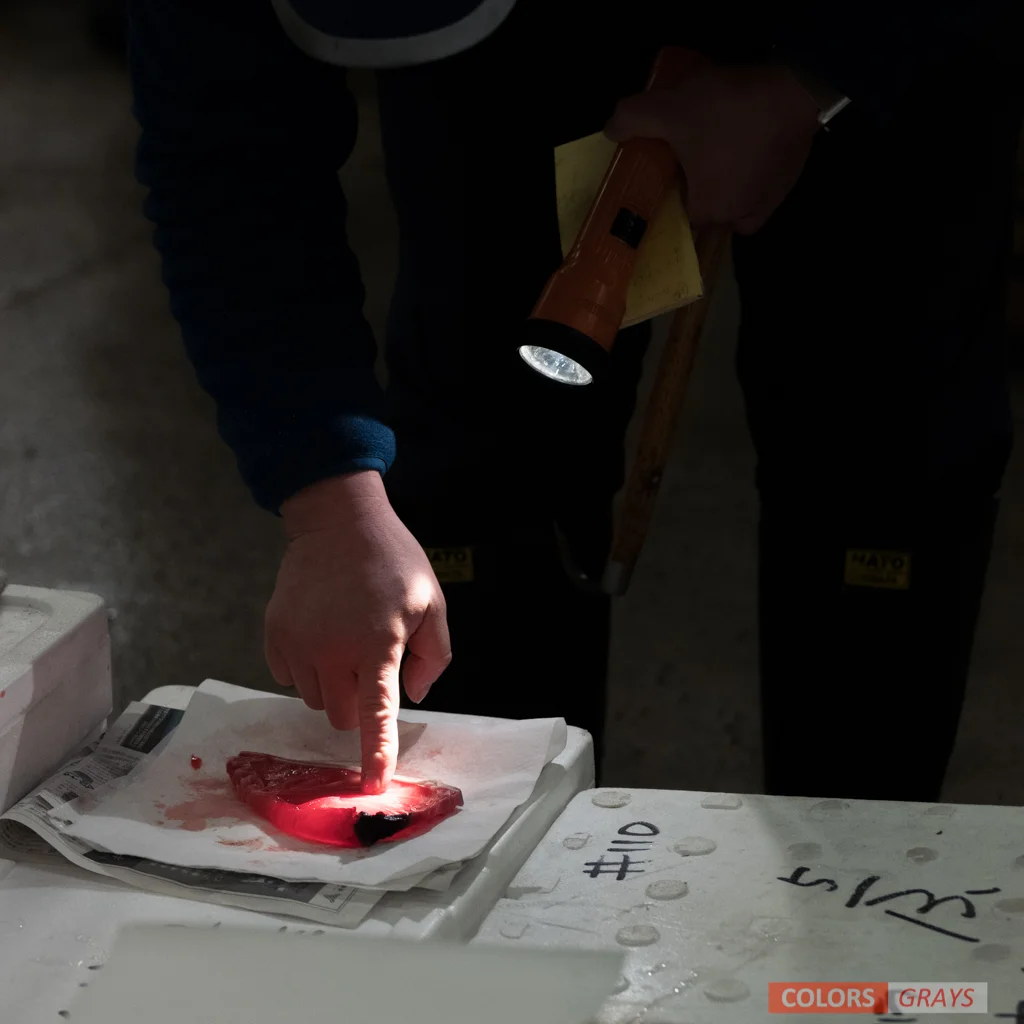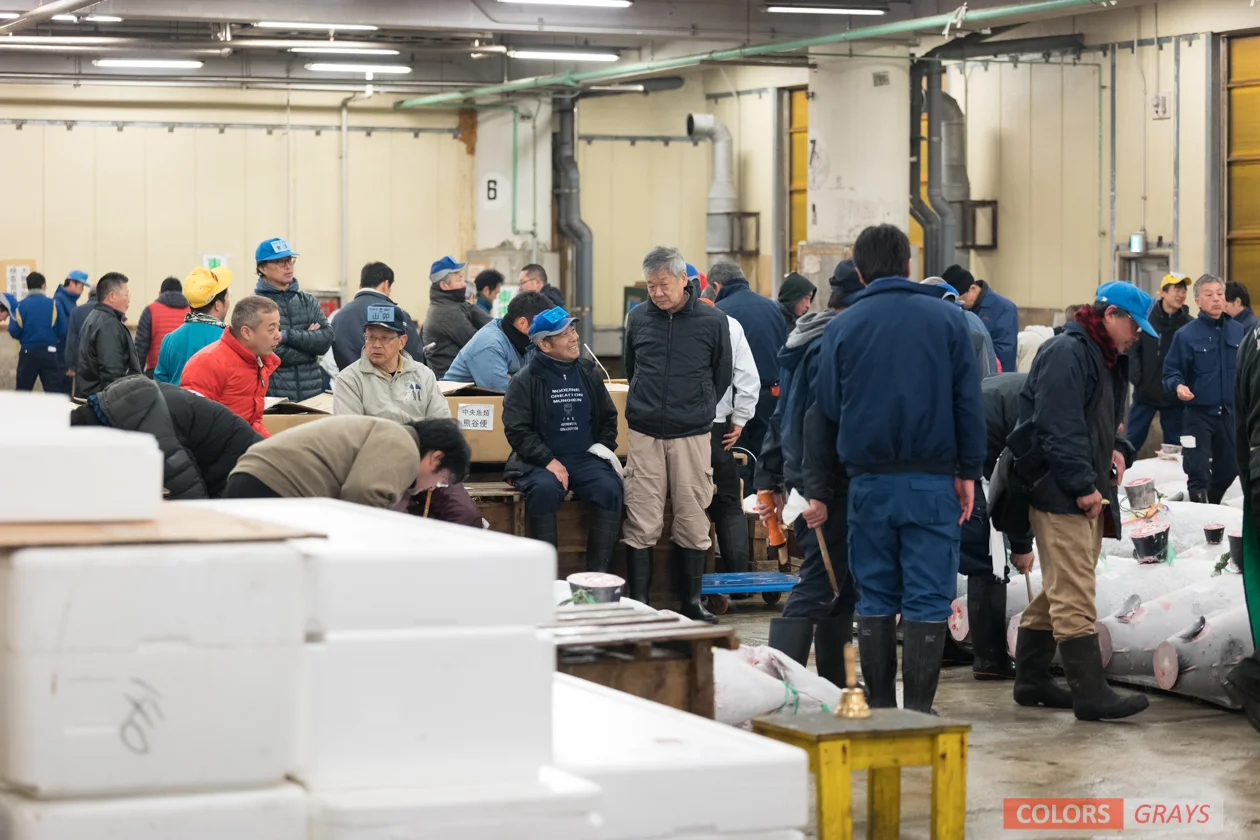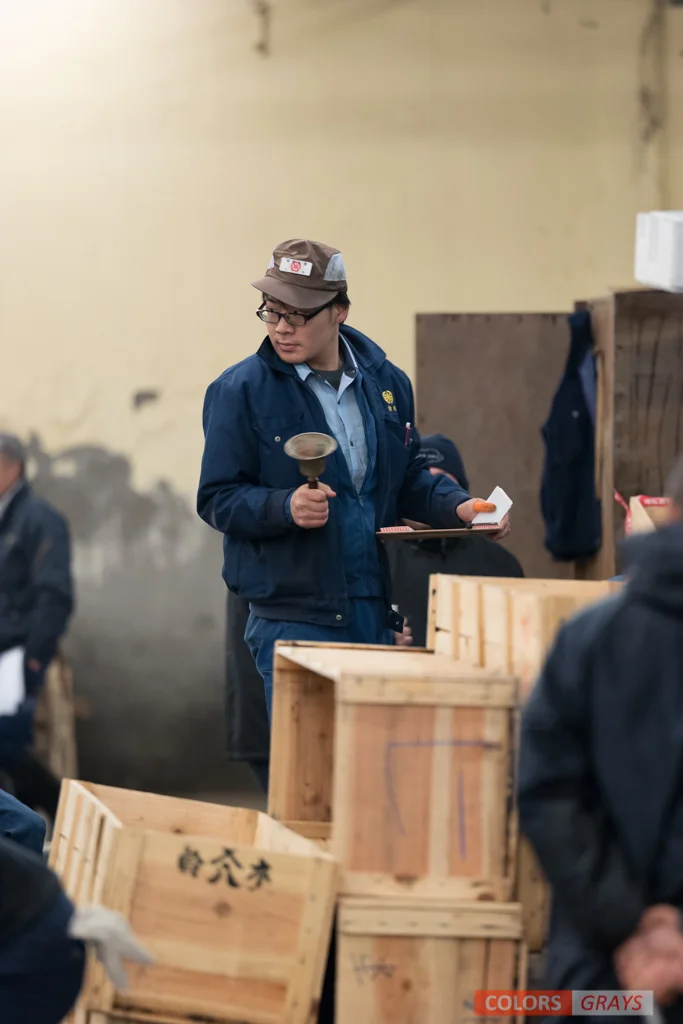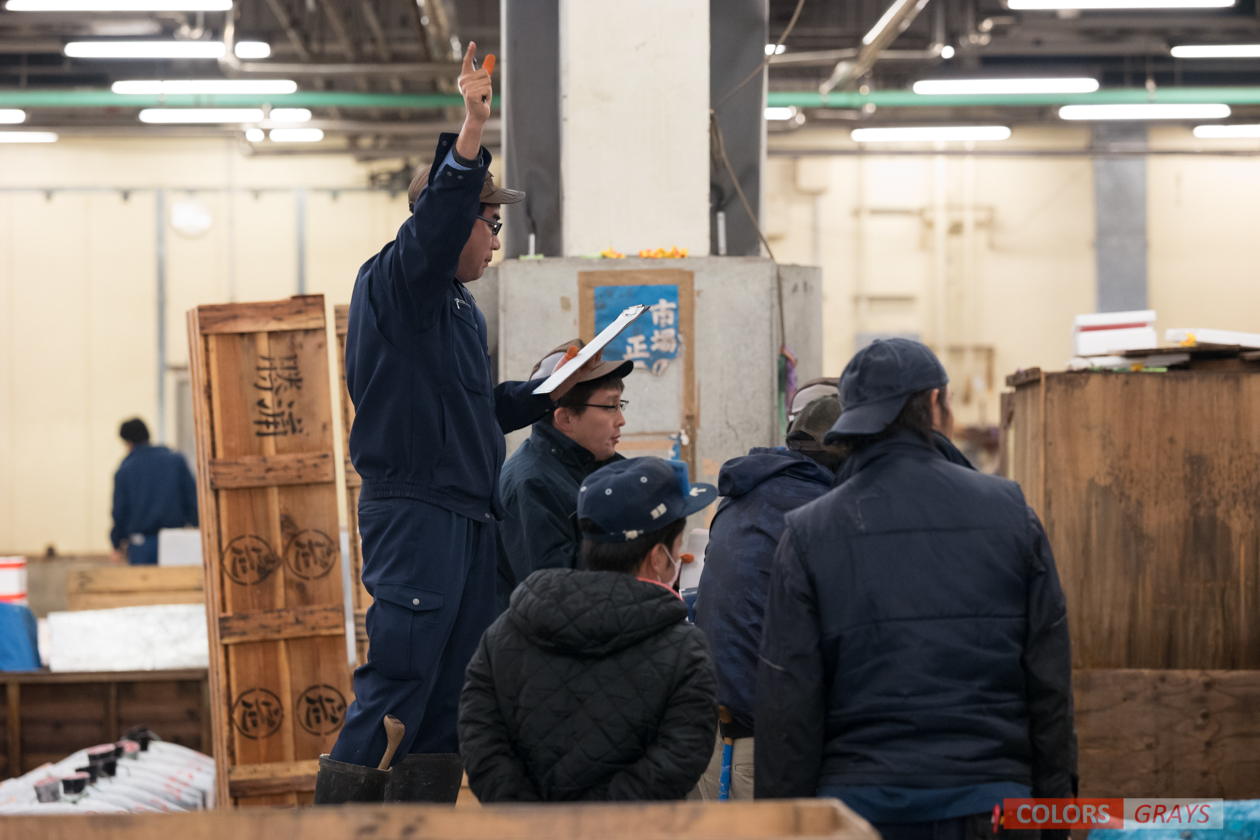If you want to visit the tuna auction in the famous Tokyo Tsukiji Fish Market you have to get up really early. It is hugely popular amongst tourists (and some locals) and hence they needed to place daily quotas of a maximum of 120 visitors in order not to disturb operations. Surprisingly it is free to visit. Admission is on a first come first serve basis and guides direct you to a waiting room. Some told us you have to be there by 2 AM to be on the safe side and to secure a slot, others said at least by 3 AM. I guess this might vary a bit by season and weekday. Since the subway does not run this early we took a taxi on a Wednesday morning at 3 AM and arrived at 3:15 AM just filling up the first cohort of 60 visitors. The auction starts at 5:30 AM and the first group of 60 people walks over at 5:25 AM. The next group will then have a slot at 5:50 AM and leave by 6:15 AM. The world's largest fish market was supposed to relocate last year but the move got delayed and most vistors are happy about this delay since the current market has a special atmosphere which many people fear may get lost.
It took about until 4:30 AM for the second cohort to fill and around this time a very sympathetic, energetic and proud tuna trader came to shorten our waiting time with some tuna facts.
He told us many things about tuna fishing, tuna by the numbers, things to consider when evaluating tuna (it should not have too much fat but not too little either), that there are two kinds (deep frozen at -60 degrees and fresh) and of course different species. That they use a little hook tool to poke and probe the flesh. That even after 20 years of being a tuna trader he feels he still has things to learn about it. That he usually tries to buy a fresh and a frozen tuna (which might have been in the ship's -60 freezer for up tp one year) during the auction. Difference in prices were explained, which parts are the most precious, that he has many clients waiting for his tuna. And, that he doesn’t eat much tuna.
At 5:25 AM we were led over into the middle observation zone of the auction area which on some days move 1000 tuna. On the one side one could see mostly frozen tuna.
On the other side we could see some fresh tuna.
Many discussions happened while the tuna traders walked around and thoroughly evaluated several different tuna.
And sometimes they poke into the exposed flesh to get an idea about the texture. But it remained unclear how they make their pre-selection, i.e. which tuna they choose to evaluate and which ones they didn't pay attention to.
On the side of the hall where fresh tuna was exhibited there was also a great deal of serious and careful examination going on.
As the auction hall gets more and more busy, some tuna traders seem to have a lot of fun...
While others appeared more introspect...
Finally, bells are ringing and several auctions are starting.
Numbers are called quickly
And usually it is a smaller group of traders who is interested in a particular auction.
Following the auction, the sold tuna is quickly carried away on a traditional cart.
And might be brought to an area where people are ready to cut it in slices.
Finally, we are leaving the auction hall while activities are ongoing.
It is remarkable and generous that these tuna traders let visitors take a look into their professional world and respectful conduct. Tuna steaks or sashimi can be delicious and visiting this unique place where whole tuna gets traded was a unique experience. But of course I also felt sorry for these majestic wild animals which not long ago might have roamed an ocean. - Tsukiji Market itself is a much bigger place offering many kinds of fresh seafood with a busy atmosphere of scooters, trucks, sellers and buyers hurrying around.












